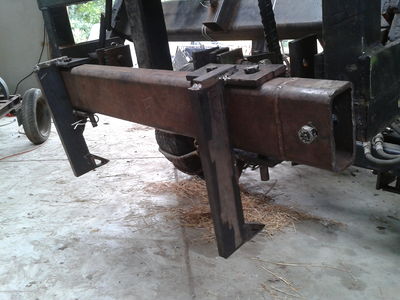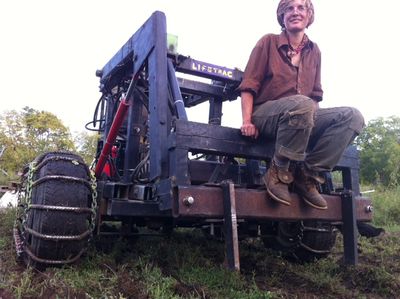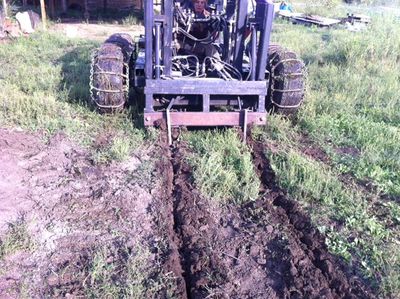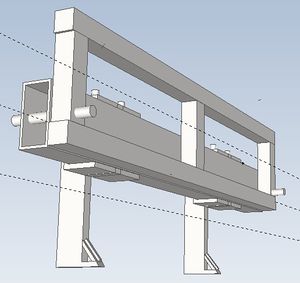Subsoiler
Basics
- A tractor-mounted farm implement used for deep tillage.
- Typically a subsoiler mounted on a compact utility tractor will reach depths of about 30 cm (12 in).
Videos
Pictures
CAD
Design Rationale
A 3"x6"x1/4" tube that is 48" long is welded to a 12"x48"x1/2" plate fitted to the quick attach plate for LifeTrac. There are two eye plates welded to the tube and match up with the eye plates on the quick attach plate. There are shank modules attached to the tube by 3/4" shaft used as pins, running through the tube as well as two plates sandwiched around the tube and welded to the shank. The shanks run 6" into the ground, and have a blade made of 1/2" angle with a piece of rebar welded down the center of the blade to push soil away to the sides of the shank. The dimensions of the shanks are 1"x3" and are 16" long. The are long enough to go 6" deep, while leaving a gap for soil to be pushed up and not get in the way of the quick attach plate.
Subsoil keyline plowing cuts narrow, deep ruts in the soil to allow for water to easily penetrate the soil. Additionally, it shatters compacted soil without turning it over, allowing for additional water penetration. It aids in preventing soil erosion and increasing the soil's water storage capacity.
Subsoil Plowing The Keyline Plan - Yeomans
Industry Standards
Here are some industry standard subsoil blades:

 Bunyip Slipper Imp by Ken Yeomans
Bunyip Slipper Imp by Ken Yeomans
- Give more available water in profile in times of severe heat stress and help lengthen the watering time pattern.
- Help prevent scald because less water lays on top.
- slows down water rate and increases penetration on sloping banks.
- Gives a 4-6" profile for super phosphate to work on thus increasing its returns to the grasses.
- Allows more water to be under the root system thus drawing the roots down.
- Tests show new roots deeper in the subsoil.
- Deeper and longer roots means you have healthier grasses
Features:
- Rigid tynes
- Spring release tynes
- Adjustable coulters
- Variable depth control
- Minimum surface disturbance
- 7 tynes requires about 50 horsepower
Plowing Procedure - Erosion Control
- Find two ruts
- Start at highest elevation of one rut
- Walk with laser level to other rut
- Place flag start, middle, and adjacent rut
- Plow from start flag along lower side of middle flag, meeting last flag on contour
Two strategies:
- Put all your flags down, then plow everything
- Begin at highest elevation and work your way down
- Remove all flags after plowing is finished
- Alternate between placing flags and plowing
- May be more useful if you're working in a small space, limited flags, or only want to plow a couple of contours.
- Only requires 3 flags



